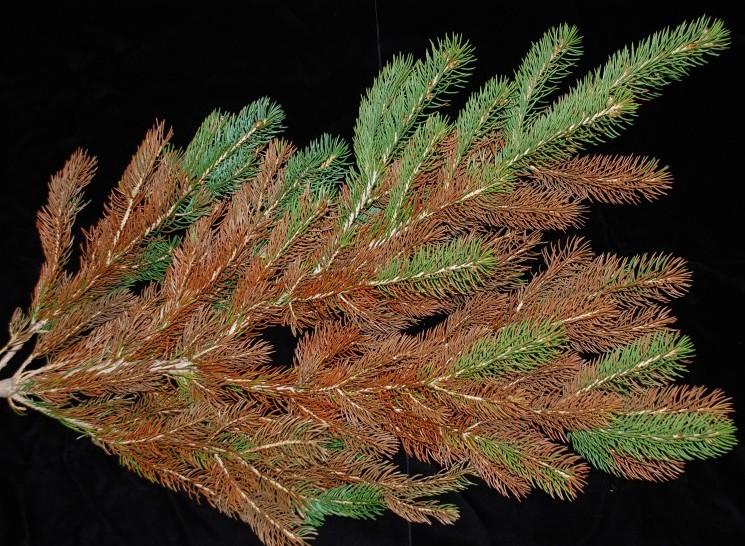The program for the control of annual weeds in the orchard should consider the weed free strip under the tree and the sod middles between the tree rows separately. The “Weed Control Season” in orchards starts in late fall, after harvest. The program implemented in the spring depends on what herbicides were applied the previous […]
Continue reading...Don’t Burn Baby Burn!

Can’t tell by the weather today (not another snow storm!), but we are entering the window for our last opportunities to make dormant treatments of insecticidal oils.
Continue reading...Might be Mites on Your Spinach?
Spinach samples were submitted to the Plant Diagnostic Laboratory today from a local organic grower. They were submitted for the diagnosis of a leaf spot disease, but closer evaluation revealed much more.
Continue reading...The Cicadas are Coming!
Brood II of the 17 year cicada (Magicicada sp.) is expected to emerge in the Northeast and mid-Atlantic this spring. The last emergence in 1996 did not cause many problems in southern NJ counties as I recall. Brood II is one of the broods reported on the east coast. This map indicates the possibility of a […]
Continue reading...Impact of Road Salt on Adjacent Vegetation
It’s the first day of spring… Consider that roadside vegetation has been exposed to de-icing compounds following several recent late-winter storms. Runoff from treated pavement contains dissolved salts that can injure adjacent vegetation. In plants sensitive to excessive salt, affected foliage may scorch and drop prematurely. In severe cases, the death of twigs, branches, […]
Continue reading...Orchard Row-Middle Sod Maintanance
Managed sod row middles have many advantages, and have been adopted by many tree fruit growers. A perennial fescue sod does not attract insects pests, is not an alternate host for harmful nematodes, and provides shelter for beneficial insects. The sod provides a firm drive path for spring spraying of insecticides and fungicides, prevent or […]
Continue reading...